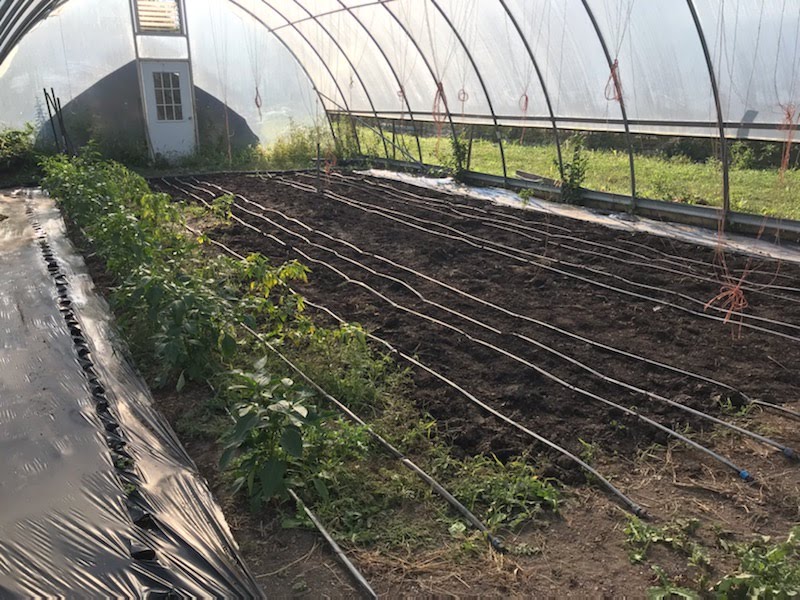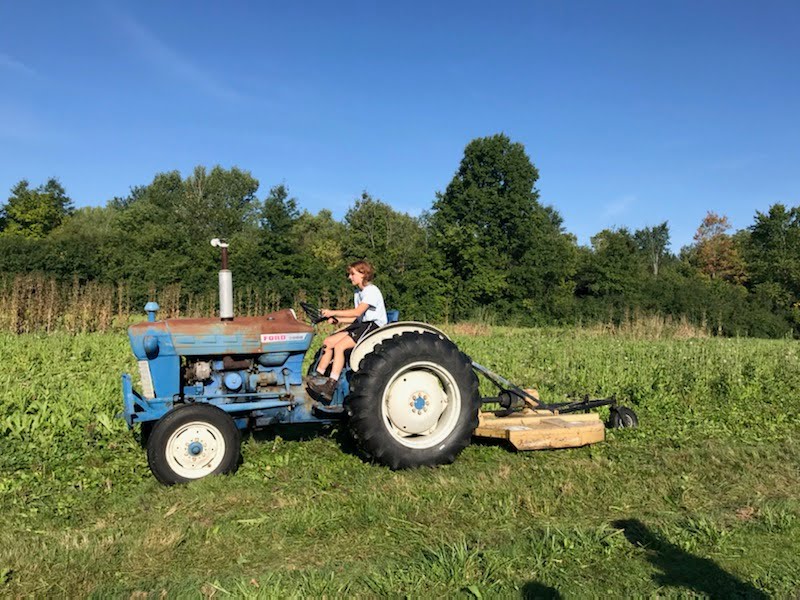
Fall on the farm comes slowly but also suddenly: the cooler mornings slow down the sense of urgency felt deep in the summer, but as the day warms, the pressure to finish tasks intensifies. Crops are constantly being rotated: the farm has been swapping out trellised cucumbers for rows of kale, arugula, and red lettuce, and the beds that once held summer squash and zucchini are being seeded with spinach, pak choi, turnips and radishes. The cherry tomatoes, which will continue to last for a while in the hoophouse are being checked for the disastrous hornworm and the new crops, which are vulnerable to the flea beetles and cabbage moths, are being carefully watched for any bite signs or holes. Hoop houses are being prepared for fall plantings by gently tilling the soil, replacing nutrients lost from the summer with a new layer of compost, and irrigation lines checked and replaced as needed. Black plastic, which will hopefully suppress the non-ending weeds, will need to be tightly extended around the perimeters of the hoop houses to make spring planting easier.
Fall native wildflowers and winter rye cover crops are being heavily seeded around the memorial garden, which will help stop the weeds from peeking through the thick layer of compost just applied to the rock-outlined beds. Fall raspberries continue to be harvested; however, initial pruning of the summer berries has begun (a more thorough prune will happen during the late winter and early spring). Beds are being prepared for the garlic that will soon be planted – they will hibernate throughout the long, cold season.
-Sarah Tyler, Head Grower

